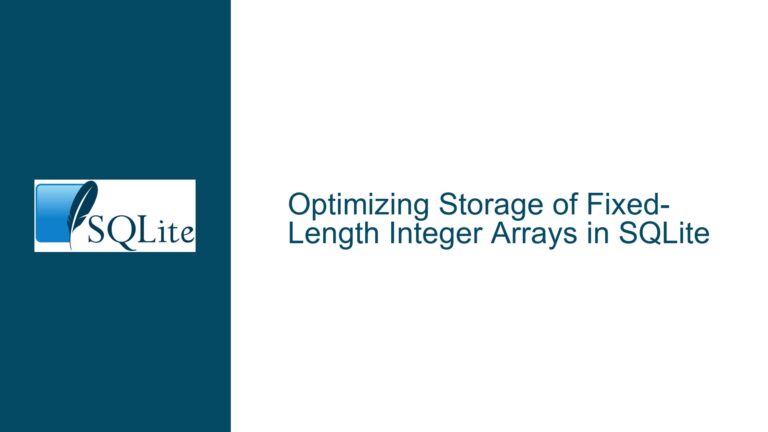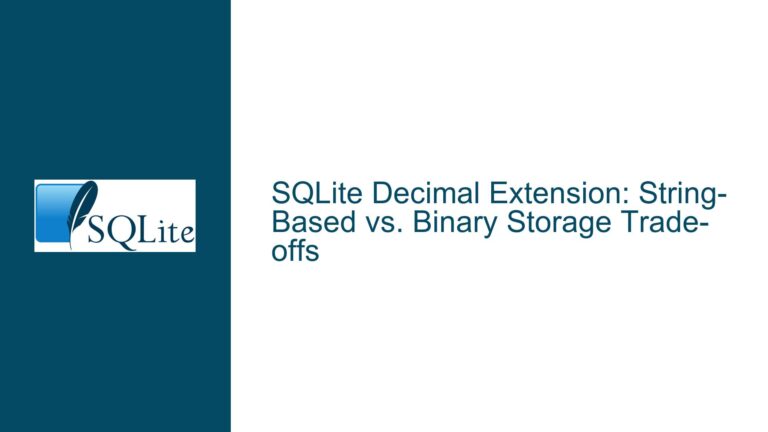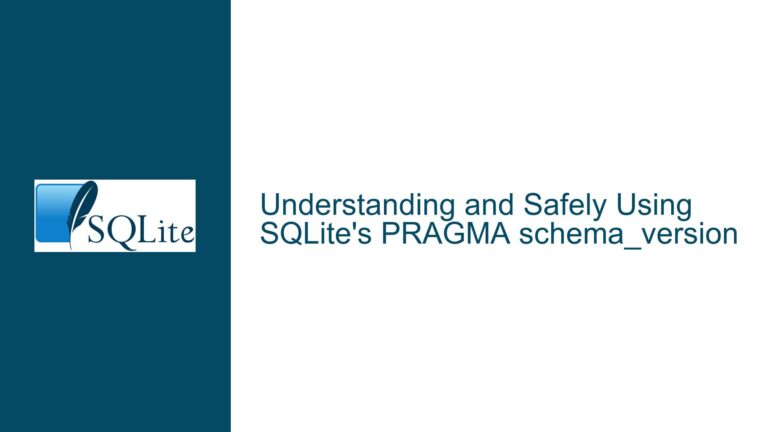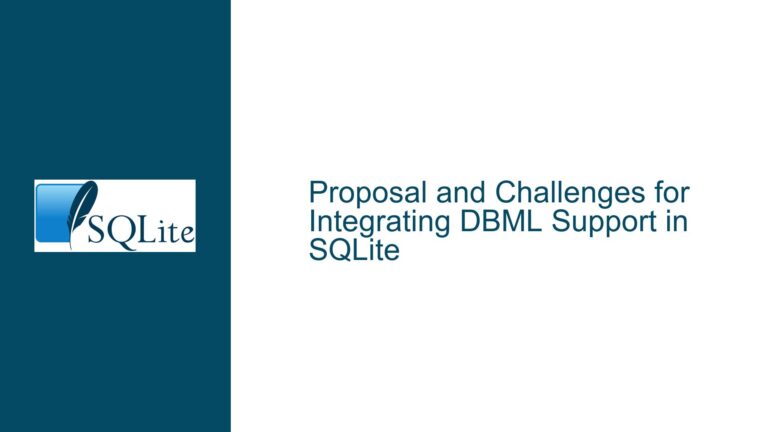Querying Deferrability of Foreign Key Constraints in SQLite
Understanding Deferrability in SQLite Foreign Key Constraints
Issue Overview
Deferrability in the context of foreign key constraints refers to the ability to postpone the enforcement of these constraints until the transaction is committed. This feature is particularly useful in complex transactions where the order of operations might temporarily violate foreign key constraints, but the final state of the database will be consistent. SQLite, being a lightweight and versatile database, supports foreign key constraints but does not provide a straightforward way to query the deferrability information directly through its standard pragmas or system tables.
The core issue revolves around the inability to retrieve deferrability information using the foreign_key_list pragma or any other direct method. This limitation poses a challenge for developers who need to implement functionalities that depend on knowing whether a foreign key constraint is deferrable, initially deferred, or initially immediate. The absence of this information can hinder the development of robust database applications, especially those that require strict adherence to SQL standards or need to interface with systems that expect this metadata.
Possible Causes
The lack of direct support for querying deferrability information in SQLite can be attributed to several factors. Firstly, SQLite’s design philosophy emphasizes simplicity and minimalism, which sometimes results in the omission of features that are considered non-essential or too complex for its intended use cases. Deferrability, while important in certain scenarios, might not be deemed critical for the majority of SQLite users.
Secondly, SQLite’s foreign key implementation is relatively recent compared to other databases. The support for foreign keys was added in version 3.6.19, and while it has been steadily improved, some advanced features like deferrability might not have been fully integrated into the system tables or pragmas. This could be due to the complexity of implementing such features in a way that aligns with SQLite’s lightweight architecture.
Another possible cause is the reliance on the sqlite_schema table, which stores the SQL statements used to create database objects. While this table contains the necessary information to reconstruct the schema, it does not provide a structured way to extract specific attributes like deferrability. Parsing the SQL statements from the sqlite_schema table is a potential workaround, but it is error-prone and not ideal for production environments.
Troubleshooting Steps, Solutions & Fixes
To address the issue of querying deferrability information in SQLite, several approaches can be considered. Each approach has its own set of trade-offs, and the choice of method depends on the specific requirements and constraints of the application.
1. Parsing the sqlite_schema Table:
The sqlite_schema table contains the SQL statements used to create tables, indexes, and other database objects. By querying this table, it is possible to retrieve the SQL statement that defines the foreign key constraint and then parse it to extract the deferrability information. This method involves writing a custom parser that can handle the various forms of SQL statements and extract the relevant attributes. While this approach provides a way to access the information, it is not foolproof and can be challenging to implement correctly, especially if the SQL statements are complex or contain nested structures.
2. Extending SQLite with Custom Functions:
Another approach is to extend SQLite with custom functions that can query the deferrability information directly. This can be done by writing a SQLite extension in C that implements the necessary functionality. The extension can then be loaded into the database and used to query the deferrability information as needed. This method provides a more robust and maintainable solution compared to parsing the sqlite_schema table, but it requires a deeper understanding of SQLite’s internals and the ability to write and compile C code.
3. Using a Hybrid Approach:
A hybrid approach combines the strengths of the previous two methods. In this approach, the sqlite_schema table is queried to retrieve the SQL statements, and a custom function is used to parse and extract the deferrability information. This method leverages the simplicity of querying the sqlite_schema table while offloading the complexity of parsing to a custom function. The custom function can be implemented in a high-level language like Python or Java, making it easier to develop and maintain.
4. Leveraging External Tools and Libraries:
For developers who prefer not to delve into the intricacies of SQLite’s internals, external tools and libraries can be used to query the deferrability information. These tools often provide higher-level abstractions and APIs that simplify the process of working with SQLite databases. However, this approach may introduce additional dependencies and overhead, which might not be desirable in all scenarios.
5. Modifying the Database Schema:
In some cases, it might be feasible to modify the database schema to include additional metadata that captures the deferrability information. This can be done by adding a new column to the table that stores the foreign key constraints or by creating a separate table that maps foreign key constraints to their deferrability attributes. While this approach provides a direct and efficient way to query the information, it requires changes to the database schema, which might not be possible in all situations.
6. Implementing a Deferrability Check at the Application Level:
If the deferrability information is not critical for the application’s functionality, it might be possible to implement a deferrability check at the application level. This involves writing application code that simulates the deferrability behavior and ensures that foreign key constraints are enforced correctly. While this method avoids the need to query the deferrability information directly, it places the burden of ensuring data integrity on the application code, which can be error-prone and difficult to maintain.
7. Consulting the SQLite Documentation and Community:
Finally, it is always a good idea to consult the SQLite documentation and community for insights and potential solutions. The SQLite documentation provides detailed information on the database’s features and limitations, and the community forums are a valuable resource for finding answers to specific questions. Engaging with the community can also lead to discovering undocumented features or workarounds that might not be immediately apparent.
In conclusion, while SQLite does not provide a direct way to query the deferrability of foreign key constraints, there are several approaches that can be used to work around this limitation. Each approach has its own set of trade-offs, and the choice of method depends on the specific requirements and constraints of the application. By carefully considering the available options and selecting the most appropriate approach, developers can effectively address the issue and ensure that their applications function as intended.






